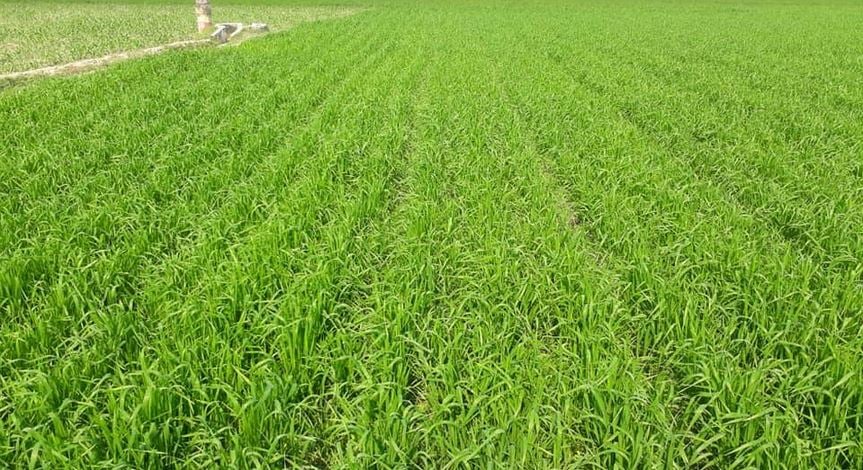News Flash
News Flash

By Md Aynal Haque
RAJSHAHI, Nov 17, 2025 (BSS) - More than 5.40 lakh tonnes of wheat are likely to be produced from around 1.29 lakh hectares of land during the current season in all eight districts of the division.
Farmers and all other field-level agricultural officials, scientists and researchers concerned have adopted need-based steps for making the current-season's wheat farming a success in the region.
Department of Agricultural Extension (DAE) has set the target of producing 4.20 lakh tonnes of wheat from 97,576 hectares of land in four districts of Rajshahi Agricultural Zone, while 1.20 lakh tonnes from 31,315 hectares in four districts of Bogra Agricultural Zone under Rajshahi division.
"We have adequate preparations and all the field-level officials and staff concerned are working relentlessly to attain the target," said Dr Azizur Rahman, additional director of DAE.
He mentioned that the farmers were seen adding more land under wheat farming than the target fixed by DAE for the last couple of years.
Meanwhile, farmers and others concerned have been very optimistic about the overall wheat production during the current season in the region, particularly the vast Barind tract.
Various other government and non-government entities have adopted diversified steps to make farming a total success in the region, as it's suitable for the crop for its water-saving and drought-tolerant features.
Barind Multipurpose Development Authority (BMDA), the largest irrigation providing state-run organization in the country's northwest region, has full preparation to promote the water-saving crop in the region to mitigate its water-stressed condition.
Abu Baker Mollah, 45, a farmer of Panchandar village under Tanore upazila, is now very busy sowing wheat. He attributed the timely sowing of seeds, accompanied by the current cold spell, is being considered as a positive sign for attaining a bumper production of the cash crop.
Dr Zaherul Islam, principal scientific officer of the Regional Wheat and Maize Research Centre, said farmers of the Barind area were found more confident in wheat farming on more new lands wheat is a less water-consuming plant.
The Wheat Research Centre has so far released 24 wheat varieties and some other time-fitting technologies for commercial cultivation.
The recently released six varieties, including Prodip, Bijoy, Shatabdi and BARIGAM-26, are more tolerant to leaf blight and leaf rust disease with the additional advantage of higher yield, Dr Islam added.
He said the Barigom 33 is the latest variety, which is blast disease resistant, zinc-enriched, large grain size and high-yielding.
Sirajul Islam, retired director of DAE, said wide-range promotion of the newly innovated variety could help increase wheat yield.
Wheat plays an important role in ensuring food security as its consumption is increasing day by day. But, Bangladesh produces hardly a million metric tonne of wheat against the demand of around 4 million tonnes annually, he stated.
Agriculturist Islam, however, said that the Rajshahi division contributes 35 per cent of the total area and 44 per cent of the total production. Not only that, there are around 50,000 hectares of more rain-fed land in the high Barind area and there has been a bright prospect of bringing the huge land under wheat cultivation.
ATM Rafiqul Islam, Manager (agriculture) of Barind Multipurpose Development Authority, said a substantial and sustainable expansion of wheat farming can mitigate the existing water-stress condition in the high Barind tract as wheat is an environment-friendly crop.
"Large-scale wheat production is very important for ensuring food security as it is the second most important cereal in the country after rice and plays a vital role in national food security."
Agriculturist Rafique viewed time has come to enhance the acreage of wheat farming instead of only depending on Irri-Boro rice in the dry area to ensure food security amid the adverse impact of climate change.
More support from international research organisations, including CIMMYT has become necessary for germ-plasm, especially heat-tolerant variety adoption, together with yield gap minimisation in the farmers' field.